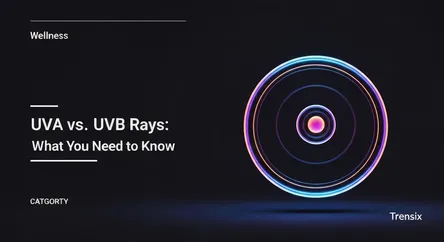Wellness
UVA vs. UVB Rays: What You Need to Know

Understand the key differences between UVA and UVB rays, how they affect your skin, and why year-round protection is essential for your health.
What is it?
UVA (Ultraviolet A) and UVB (Ultraviolet B) are two types of ultraviolet radiation from the sun that damage the skin. UVA rays have a longer wavelength and penetrate deep into the skin's thickest layer, the dermis. They account for about 95% of the UV radiation reaching the Earth's surface. UVB rays have a shorter wavelength and primarily affect the outer layer of the skin, the epidermis. A simple way to remember the difference is that UVA rays are the "aging" rays, while UVB rays are the "burning" rays.
Why is it trending?
Increased awareness of skin cancer and premature aging has made understanding UVA and UVB rays a major focus in wellness and beauty. With skin cancer being a significant health concern, consumers are more educated about the need for "broad-spectrum" sunscreens that protect against both types of rays. This knowledge is trending as people realize that UVA rays are present year-round, even on cloudy days, and can penetrate glass, making daily protection crucial, not just a summer concern.
How does it affect people?
Unprotected exposure to both UVA and UVB rays damages DNA in skin cells, which can lead to skin cancer. UVA rays are the primary cause of premature skin aging, including wrinkles, fine lines, and dark spots. UVB rays are the main culprit behind sunburn and play a significant role in developing skin cancers like melanoma. While UVB exposure is necessary for vitamin D production, overexposure is harmful. Both ray types contribute to long-term skin damage, making consistent sun protection a vital health practice.